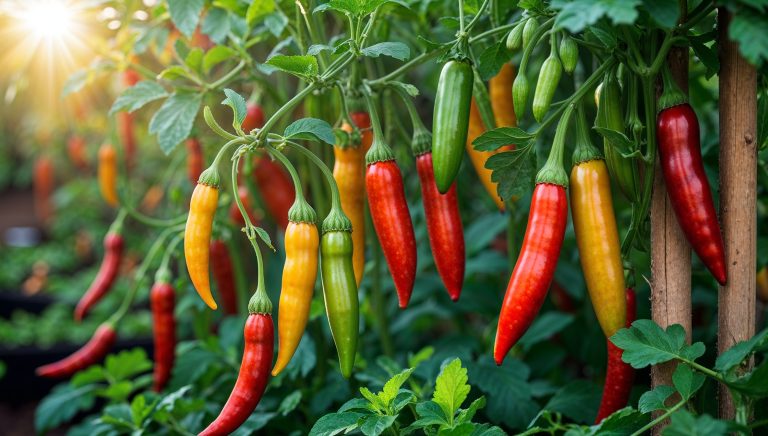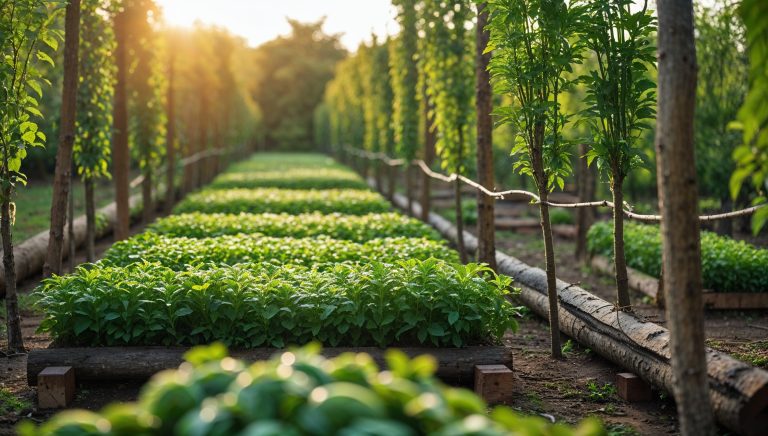Cucumbers are a refreshing and versatile vegetable that can be grown easily in your garden. They are perfect for salads, sandwiches, or pickling, and they grow rapidly in the right conditions. Whether you are growing cucumbers in a large garden or in smaller raised beds, following the proper care instructions will help ensure a bountiful harvest. In this article, we’ll guide you through the process of growing and caring for cucumbers, from planting to harvesting, so you can enjoy these crisp, flavorful vegetables all season long.
1. Choosing the Right Cucumber Variety
Before planting cucumbers, it’s important to choose the right variety for your space and needs. There are two main types of cucumbers: slicing cucumbers and pickling cucumbers.
- Slicing Cucumbers: These cucumbers are larger, with thicker skins, and are typically used for fresh eating, such as in salads or sandwiches. Popular slicing varieties include Marketmore 76, Straight Eight, and Burpless cucumbers.
- Pickling Cucumbers: These are smaller, thinner-skinned cucumbers that are ideal for pickling. They have a firmer texture, which makes them perfect for preserving. Varieties like Boston Pickling and National Pickling are excellent choices for making homemade pickles.
- Bush Cucumbers: If you have limited space, bush varieties are a great option. These compact plants grow on shorter vines and are perfect for container gardening or smaller garden spaces.
- Vining Cucumbers: These cucumbers grow on long vines and produce larger yields. They require more space and are typically grown on trellises to save space and keep the fruit off the ground.
2. Planting Cucumbers
Cucumbers are warm-season crops that need a lot of sunlight and warmth to grow well. Here’s how to plant them for optimal growth:
- Timing: Plant cucumbers after the danger of frost has passed and when the soil temperature has reached at least 60°F (15°C). Cucumbers grow best in warm weather, so wait until late spring or early summer for planting.
- Soil Preparation: Cucumbers prefer rich, well-drained soil that is slightly acidic, with a pH between 6.0 and 7.0. Amend the soil with compost or well-rotted manure to increase fertility. Cucumbers also benefit from a soil that is high in organic matter.
- Spacing: Cucumbers need plenty of space to spread out. For vining varieties, plant the seeds or seedlings 36-42 inches apart, as these plants can spread wide. For bush varieties, plant them 24-36 inches apart. If planting in rows, space the rows about 36-48 inches apart to allow for proper airflow.
- Planting Depth: Plant cucumber seeds about 1 inch deep in the soil. If you’re using transplants, plant them at the same depth they were in their nursery pots.
3. Watering Cucumbers
Cucumbers need consistent moisture to grow well, but they do not like to sit in waterlogged soil. Here’s how to properly water your cucumber plants:
- Watering Frequency: Cucumbers are high-water plants, especially during their growing and fruiting stages. Aim to provide at least 1 to 1.5 inches of water per week, depending on the weather and soil conditions. During dry spells, you may need to water more frequently.
- Watering Method: Water cucumbers deeply, applying water directly to the soil at the base of the plants. Avoid overhead watering, as this can cause disease and wet the foliage. Using a soaker hose or drip irrigation system is ideal for cucumbers, as it delivers water directly to the roots and keeps the leaves dry.
- Mulching: Applying a layer of mulch around your cucumber plants helps to retain moisture, suppress weeds, and regulate soil temperature. Organic mulches, like straw or grass clippings, work well and improve the soil as they decompose.
4. Fertilizing Cucumbers
Cucumbers are heavy feeders and need plenty of nutrients to grow strong and produce abundant fruit. Here’s how to fertilize your cucumber plants:
- Soil Amendment: Before planting, mix compost or well-rotted manure into the soil to enrich it with essential nutrients. This provides a steady supply of nutrients as the cucumbers grow.
- Fertilizing During Growth: Once your cucumber plants start to grow, apply a balanced fertilizer high in nitrogen, phosphorus, and potassium. Use a liquid fertilizer or slow-release granular fertilizer for a steady supply of nutrients throughout the growing season.
- Feeding After Flowering: After the plants begin to flower, switch to a fertilizer with a higher phosphorus and potassium content to encourage fruiting. Avoid excessive nitrogen, as it can lead to leafy growth at the expense of fruit production.
5. Supporting Cucumber Vines
Cucumbers are vining plants and can take up a lot of space. To save space and encourage better fruit production, it’s a good idea to provide support for the vines. Here’s how to support cucumber vines:
- Trellises: One of the best ways to support cucumber vines is to use a trellis. Installing a trellis allows the plants to grow vertically, saving space in the garden and keeping the fruit off the ground, which helps prevent rot and pests. As the vines grow, gently tie them to the trellis using soft plant ties.
- Cages: If you’re growing bush cucumbers or smaller varieties, a cage can be used to support the plants. This keeps the vines upright and allows for better air circulation.
- Pruning: Prune cucumber plants regularly to remove excess growth and encourage fruit production. Pinch back the tips of the vines when they reach the top of the trellis to encourage lateral growth and more flowers.
6. Controlling Pests and Diseases
Cucumbers can be affected by a variety of pests and diseases, but with the right care, you can minimize these issues.
- Common Pests: Cucumbers are often attacked by pests like aphids, cucumber beetles, and spider mites. To control pests, use organic insecticides like neem oil or introduce natural predators, such as ladybugs or lacewings.
- Diseases: Cucumbers are susceptible to diseases like powdery mildew, downy mildew, and cucumber mosaic virus. Prevent disease by watering at the base of the plant (to keep the foliage dry), rotating crops each season, and removing infected leaves promptly.
- Crop Rotation: To reduce the risk of soil-borne diseases, practice crop rotation by planting cucumbers in different areas of your garden each year. This helps to break the cycle of pests and diseases that target cucumbers.
7. Harvesting Cucumbers
Cucumbers grow quickly, and it’s important to harvest them at the right time to ensure the best flavor and texture.
- When to Harvest: Cucumbers are typically ready to harvest when they have reached the desired size but are still firm and smooth. For slicing cucumbers, this is usually when they are 6-8 inches long. For pickling cucumbers, harvest them when they are 3-4 inches long. If you leave them too long on the vine, they may become bitter and overripe.
- How to Harvest: Use a sharp knife or garden shears to cut cucumbers from the vine. Be careful not to damage the plant when harvesting. For vining cucumbers, you may need to cut the stem just above the fruit, leaving a small part of the stem attached to the cucumber.
- Post-Harvest Care: Cucumbers are best eaten fresh, but they can be stored in the refrigerator for up to a week. If you have an abundance of cucumbers, consider making pickles or preserving them in other ways.
8. Winterizing Cucumber Plants
Cucumbers are warm-season plants and cannot tolerate frost. In colder climates, cucumbers will die off once the first frost hits, so you’ll need to prepare for the end of the growing season.
- Remove Dead Plants: After the growing season ends, remove any dead cucumber vines from your garden to prevent the spread of diseases and pests. Compost the leftover plants or dispose of them if they show signs of disease.
- Save Seeds: If you want to grow cucumbers again the following year, save seeds from your best fruit. Dry the seeds and store them in a cool, dry place until next season.
Conclusion
Growing cucumbers in your garden is a fun and rewarding experience that provides you with fresh, delicious produce. By choosing the right variety, providing proper care, and keeping an eye on pests and diseases, you can enjoy a bountiful harvest of cucumbers throughout the growing season. Whether you enjoy them fresh, pickled, or in a salad, cucumbers are a versatile vegetable that everyone can grow and enjoy.

